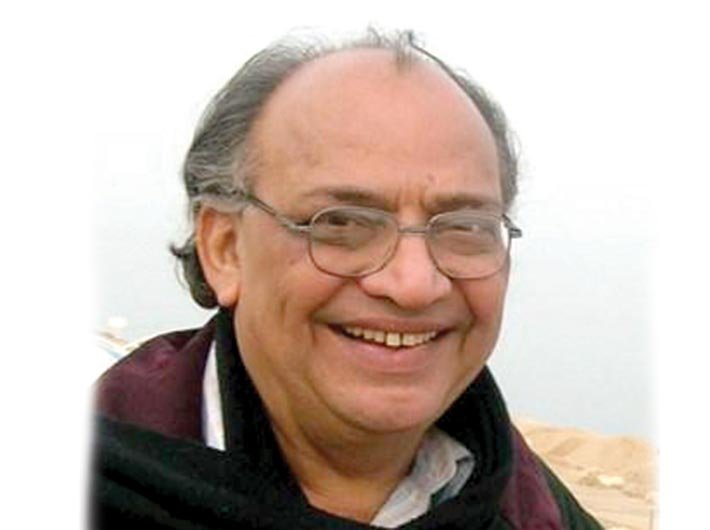The Patel community’s agitation demanding OBC status has brought life to a standstill across Gujarat. To understand the genesis and implications of this agitation, Ashish Mehta talked to Achyut Yagnik, a leading expert on Gujarat society and honorary secretary of the Ahmedabad-based NGO ‘SETU: Centre for Social Knowledge and Action’. Excerpts from the interview:
Is the Patel community’s demand for the OBC status justified?
There is no justification; legally, technically, in no way. The Patel or the Patidar community is very prominent in all spheres in Gujarat, be it industry, the dairy sector, cooperative societies.
But isn’t it the case that historically the community has been agrarian and some claim to backwardness can be made on that basis?
In the 19th century, they were an agrarian community and were called ‘kanabis’ (or ‘kunbis’). But it changed in the early 20th century, especially with the freedom struggle. The two prominent satyagrahas in Gujarat were in Kheda and Bardoli, they were over agrarian issues, and Sardar Vallabhbhai Patel led them. The Patel community’s status rose along with the rise of the Congress. Also, Patels’ economic status improved thanks to cash crops – for example, groundnut in Saurashtra and cotton in central Gujarat. They put their surplus earnings from farming into small and medium enterprises (SMEs), and thus emerged several hubs, like brass industry in Jamnagar, engineering parts in Rajkot and ceramic/pottery in Morbi.
In the early 1980s, when the Congress government led by Madhavsinh Solanki empowered ‘KHAM’ – Kshatriya, Harijan [Dalit], Adivasi [Tribals], and Muslims – Patels started turning anti-Congress, which was a factor in the rise of the Bharatiya Janata Party (BJP) in Gujarat. Today they have 40-odd MLAs among BJP’s 121, the ruling party’s state president is a Patel [RC Faldu], and so is of course the chief minister [Anandiben Patel].
If the community is so well placed, what led to this sudden eruption? How come people in such large numbers are so passionate about quota?
The younger generation’s aspirations have changed. There are three reasons for that.
- Urbanisation has shifted them from the agricultural base to professional education and jobs, and the community also has fascination for immigration [Patels form a sizeable chunk among NRIs]. So, when youngsters seek admission to professional courses and some fail, they feel deprived.
- The ‘Gujarat model’ of the Narendra Modi administration supported big industries but not SMEs – with which this community is connected. When the SMEs face a downturn, they used to turn to diamond processing, but that sector is also in decline today.
- The ‘middle middle-class’ and the lower middle-class within the community have has had an aspiration for government jobs. But when Modi was the chief minister, government jobs became contractual. Instead of teachers in regular jobs there came a contractual position called Vidya Sahayak with low salaries, and similarly in police and so on. Government jobs lost importance.
The net result is that the younger generation of Patels feels deprived.
Isn’t it the case that something like the ‘Gujarat model’ has been happening all over the country since the launch of liberalisation in 1991?
But Modi went a step ahead. The post-1990 generation has seen only this post-liberalisation world. When they turn 20 and think of their careers, they feel left out. The Gujarat model, in spite of all the propaganda, is now being demystified. As far as Gujarat is concerned, the BJP’s base is disintegrating. Many Patels are not likely to support the party anymore.
Within the community, do you see any nuances in this agitation?
Patels of north Gujarat are considered extra keen to go abroad, and the quota protest did start from north Gujarat. By the way, a lesser known factor at work here is this: the community has three sub-castes of Leuvas, Kadvas and Anjanas. The smaller group of Anjanas is largely confined to just three districts of north Gujarat. They were included in the socially and economically backward castes (SEBC) in Gujarat because of their certain traditions, and over the years they have benefitted from quotas in education and government jobs. The other two sub-castes obviously feel left out when all three of them are after all Patels. This is why the agitation started from north Gujarat.
On the other hand, Patels from central Gujarat have not participated in the agitation much, because they have progressed so much [with their ‘NRI connections’] that they have no interest in quota benefits.
There is also an intergenerational difference here. The grandfather in a family would be a farmer and a BJP supporter, but the grandson aiming for a professional career feels left out and has turned against the BJP government.
Will there be any national ramifications of this – an upper-caste, economically well-off community demanding quota instead of opposing it, as we have seen so far?
I do not see any ramifications outside Gujarat. Similar landowning and dominant castes elsewhere, for example, Reddys in Andhra – which is now bifurcated, do not have a similar social composition. They have more stratification. Jats and Gujjars have made similar demands in recent years, but they have a kind of feudal element that Patels do not have.
ashishm@governancenow.com
(The interview appears in the September 16-30, 2015 issue)

